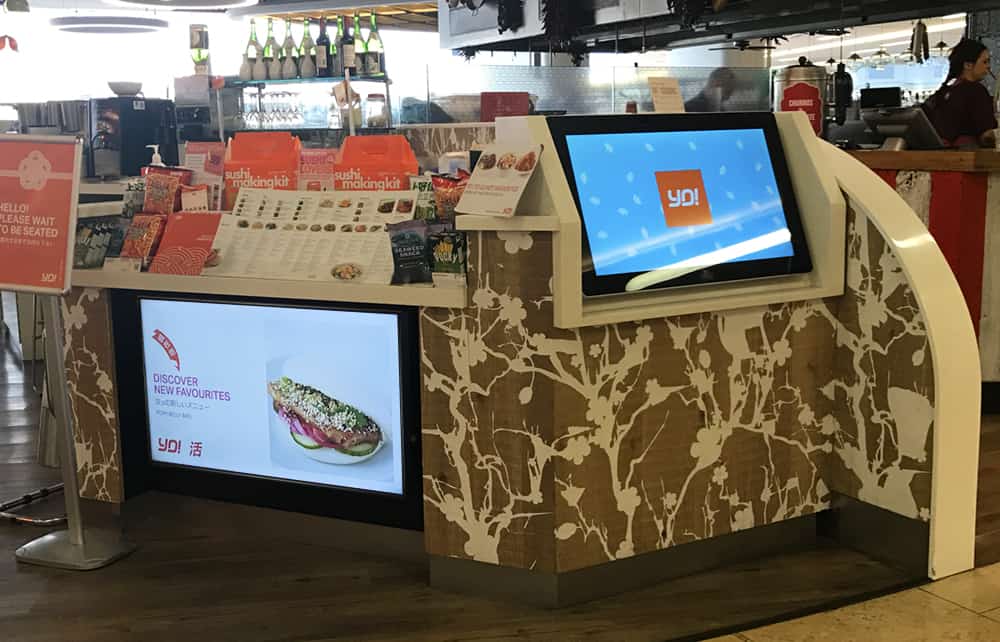
Best Practice When Managing a Network of Digital Signage Screens
If you are about to embark on setting up a network of Digital Signage displays there are some factors that you should keep in mind. Likewise once your network of screens is installed and configured there are considerations that should be taken into account.
LAN over Wi-Fi or 4G
Choosing LAN over a Wi-Fi or 4G connection is widely recommended for permanent installs. This is due to the fact that when you are connected through an Ethernet cable, the connection is more stable, and doesn’t disconnect nearly as much as Wi-Fi or 4G since it does not rely on a wireless connection. LAN is also remarkably faster as it provides a direct connection to the internet, receiving the full Mbps (Megabytes per second) that your service has to offer.
When you are using the synchronisation function, connecting via LAN reduces latency, causing everything to run a lot smoother. This is especially true when the synchronisation function is used with multiple screens close together, or to make up a video wall solution.
Wi-Fi and 4G connectivity is more suitable when the screen is not being permanently installed, for example when being used for exhibitions, or when there is no access to an Ethernet cable. 4G connectivity may also be the best option for applications that have networks with heavy restrictions in place, or the network administrator cannot be reached or communicated with very easily, such as use in Airports.
Hardware Setup and Content
When setting up the content you want to display, you must first decide if your screens will be in landscape or portrait, so that you can then create your content in accordance to the screen setup. You must also ensure that the screen itself is properly configured in the desired orientation. It is important to decide the objective of the screens, as this will help you design the content in advance, and also assist in considering corporate colours and branding.
Understanding the CMS (Content Management System) as much as possible before installation will really help with the whole process of creating the content and publishing it. Another important aspect to consider is the serial numbers of the screens/players. It is important to keep note of them during an install so that you can update the screen or player names on the CMS accordingly, helping you publish content to the correct screens. Before finalising your installation, it is recommended to ensure the screen/player is connected to the server, so that you may start publishing content straight away.
Mounting Your Screens
When mounting your screen there are many things to consider. The first of which is where you want the screen to be displayed, and how you want to present it. For example, if the screen is to be wall mounted will it be flat to the wall at eye level or mounted higher up and require a tilting wall mount. If the screens are to be mounted in a window display which is the best option; a floor stand, a ceiling mount, or a floor to ceiling pole? For window displays, it is also important to consider the distance between the window and the screen surface to ensure there is enough room for air to circulate to help prevent the display from overheating.
When connecting a mounted screen, it is important to know how you are going to get it connected. For example, if you are connecting a ceiling mounted screen via LAN, is there a way of running the Ethernet cable through the ceiling to then come down through the ceiling mount? When connecting via Wi-Fi, it is important to note the distance from the router/modem as too much distance between them will cause a weak connection, and possibly cause the screen to drop off from the network. In these situations, it is recommended to either implement a Wi-Fi signal booster or use a more powerful router.
User Management
Another consideration is who will be managing your Digital Signage network. Will there be multiple users that will need to have different privileges? For example you may have a third party content creation company who can upload content to your account but not publish any of the content to any screens. You may want to limit specific zones of certain screens to just one user, for example giving a receptionist access only to the scrolling text zone of a screen in the reception area. If multiple people will be managing or contributing to the network it is recommended that multiple user accounts are created so that specific user activity can be monitored. If all actions will be carried out by the same person then only a single admin account is needed.
Scheduling Content
Scheduling your content can be very useful if you want to display certain playlists at certain times. This can be done through the publishing options on the CMS, which can allow you to have a default playlist, as well as playlists that play at any set time and day. It is recommended to have a plan for this before jumping in.
This function can be used for content such as special offers, or just some temporary content that you wish to display. With this, you can control what is on screen and when, leading to multiple scenarios that benefit you.
These points give some guidance to ensure that you consider what is involved when planning a network of Digital Signage screens. It is important to factor all of these aspects into your project before choosing a Digital Signage hardware and software solution.

Thomas Fraser-Bacon is the Marketing Director for Allsee Technologies. His background is in Digital Signage and Product Design.


